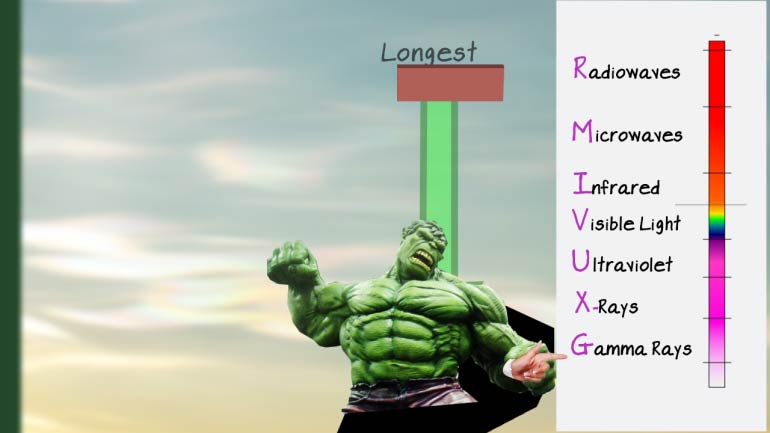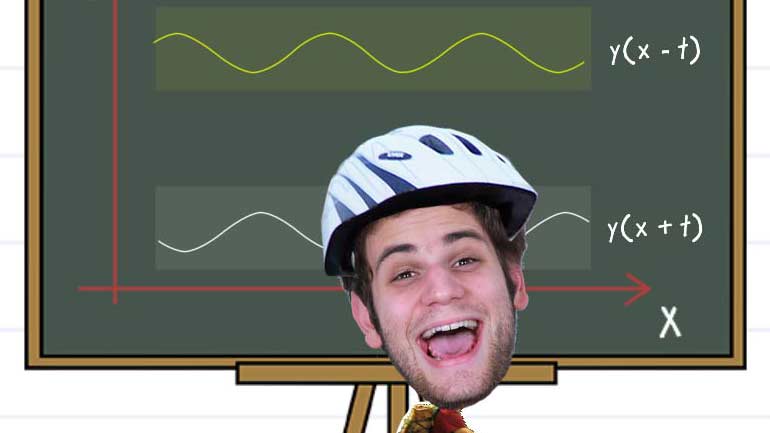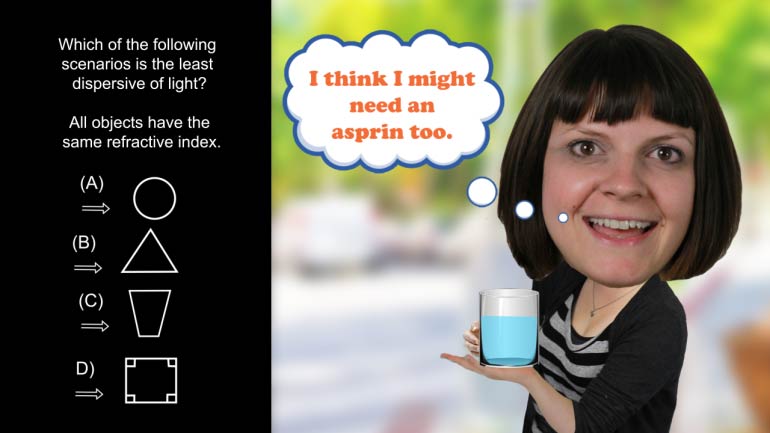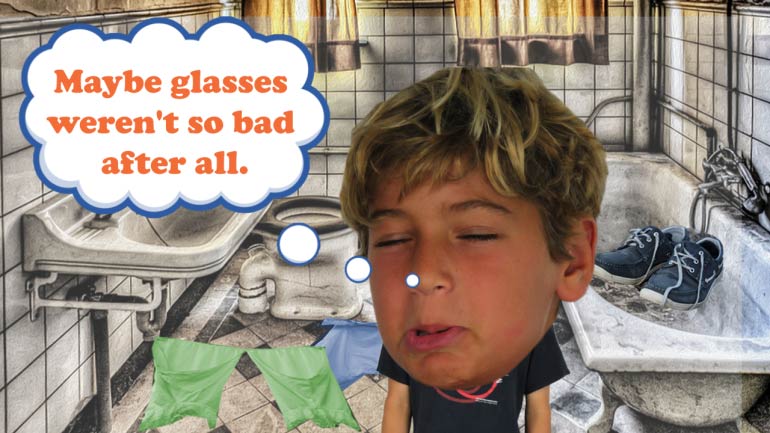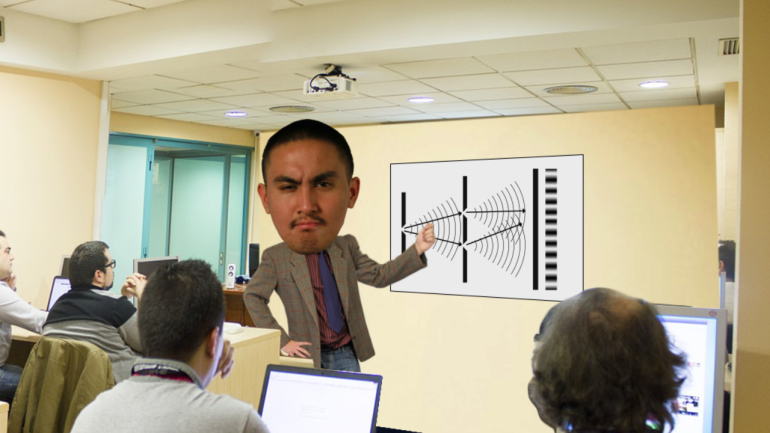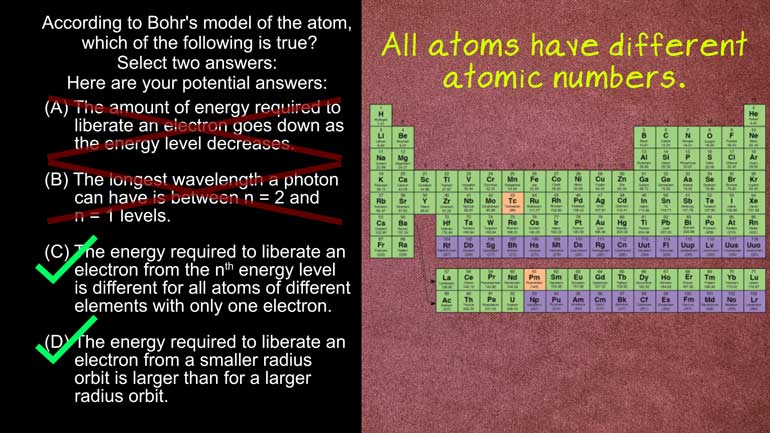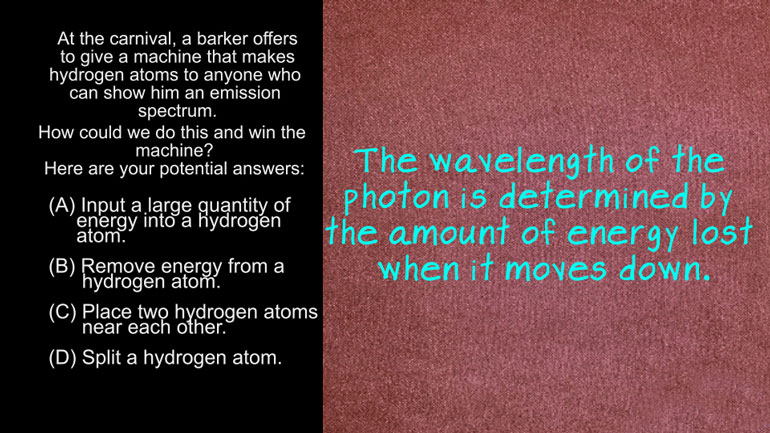ShmoopTube
Where Monty Python meets your 10th grade teacher.
Search Thousands of Shmoop Videos
Waves Videos 10 videos
AP Physics 2: 1.4 Waves. Arrange these objects and superpowers in decreasing order according to wavelength of relevant radiation.
AP Physics 2: 1.2 Waves. What is the mathematical description of the wave?
AP Physics 2: 2.2 Waves. Which of the following scenarios is the least dispersive of light?
AP Physics 2: 1.2 Waves 172 Views
Share It!
Description:
AP Physics 2: 1.2 Waves. What is the mathematical description of the wave?
Transcript
- 00:00
Fine we sneak And here's your shmoop to shore brought
- 00:06
to you by standing waves But we're feeling lazy right
- 00:09
now so we'll just wave from our chair I consider
- 00:12
the standing wave Why of x t equals four sign
- 00:17
three t co signed seven x it's formed by counter
Full Transcript
- 00:21
propagating but otherwise identical waves Well one of these why
- 00:27
of ext is travelling in the positive ex direction what's
- 00:31
the mathematical description of the other wave Why x t
- 00:35
and here are potential answers All right here we go
- 00:42
Homeboy we're so excited for this We can barely stand
- 00:45
it We get to talk about trig identities We know
- 00:49
we're stuff too but trying to scream with joy too
- 00:52
loud Scary house to figure this out were specifically talking
- 00:57
about some and difference formulas But we know a standing
- 01:00
wave is really two waves moving in opposite directions creating
- 01:04
nodes of maximum destructive interference An anti nodes of maximum
- 01:09
construct of interference Well a standing wave of why ext
- 01:12
is described as a sign b plus c plus a
- 01:17
sine b minus e And to expand that further equals
- 01:21
a sign of pecos Nc plus coastline be signed c
- 01:26
plus eight times quantity and quality signed b cosign c
- 01:30
minus co signed b sci fi and your skin is
- 01:33
we're right down there right All right that's a mouthful
- 01:35
and that'll wear out of tongue We can simplify the
- 01:38
equations with the distributive property and then we can see
- 01:42
that the two versions of a co sign be sine
- 01:45
c cancel each other out since we're subtracting one of
- 01:48
them So we're left with two of a sign be
- 01:52
co signed c well we were given y of x
- 01:56
Equals four sign three t co signed seven x at
- 01:59
the start of the equation we can set that equation
- 02:02
is equal to what we just put together with that
- 02:05
we can find that a equals to be equals three
- 02:08
t and c equal seven x this means that why
- 02:12
x t equals to sign three t plus seven x
- 02:15
plus to sign three team minus seven x We're looking
- 02:19
at the equation we found and looking at the answer
- 02:21
we've already rule out a nd we know that the
- 02:24
way of travelling in the negative direction has to either
- 02:27
be to sign three tea plus seven Acts or to
- 02:30
sign 3 team minus seven x the only thing we
- 02:33
have to figure out now is the direction well because
- 02:36
this wave moves in the negative x direction as time
- 02:39
increases the accent e coefficients need tohave the same sign
- 02:43
and that means the answer is b remember the wave
- 02:48
moving in the positive ex direction will always have the
- 02:51
format of why x minus t on the wave moving
- 02:55
from right to left We'll always have the format of
- 02:58
why x plus team okay that was a lot of
- 03:01
trick identity work were emotionally drained from all the fun
- 03:04
we just had All we can muster is a lying 00:03:07.395 --> [endTime] down wave Now Yeah
Related Videos
AP Physics 2: 1.1 Properties of Objects and Systems. What is the magnitude and direction of the conventional current in this wire?
AP Physics 2: 1.5 Properties of Objects and Systems. According to the Bohr's model of the atom, which of the following are true?
AP Physics 2: 2.2 Properties of Objects and Systems. What will happen as the robot son moves the sponge near (but doesn't touch) the plate?
AP Physics 2: 2.4 Properties of Objects and Systems. How could you show the carnival barker an emission spectrum?
